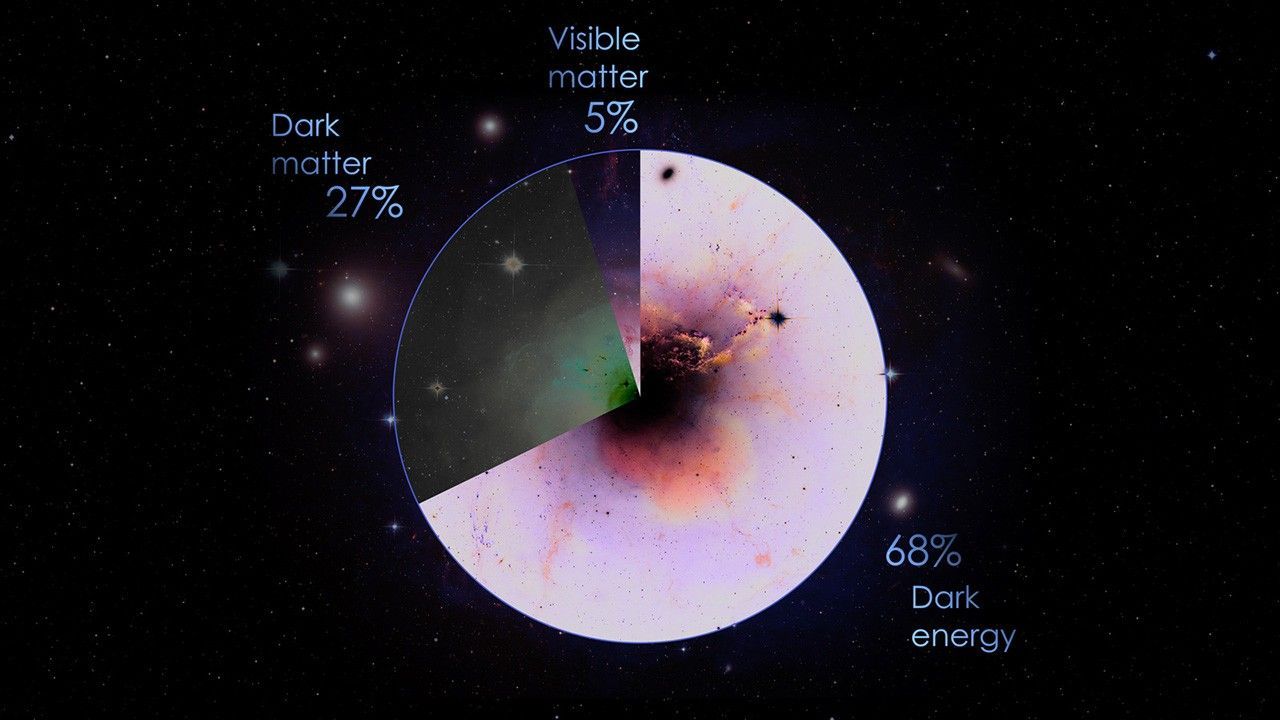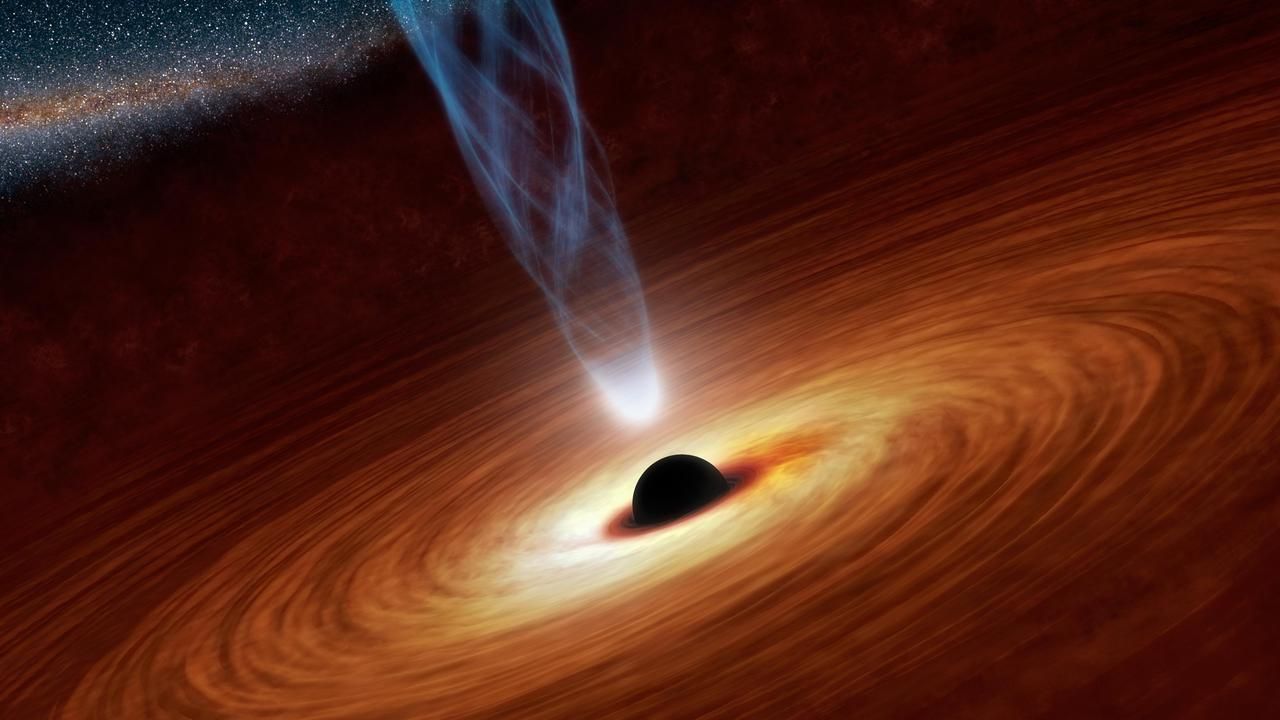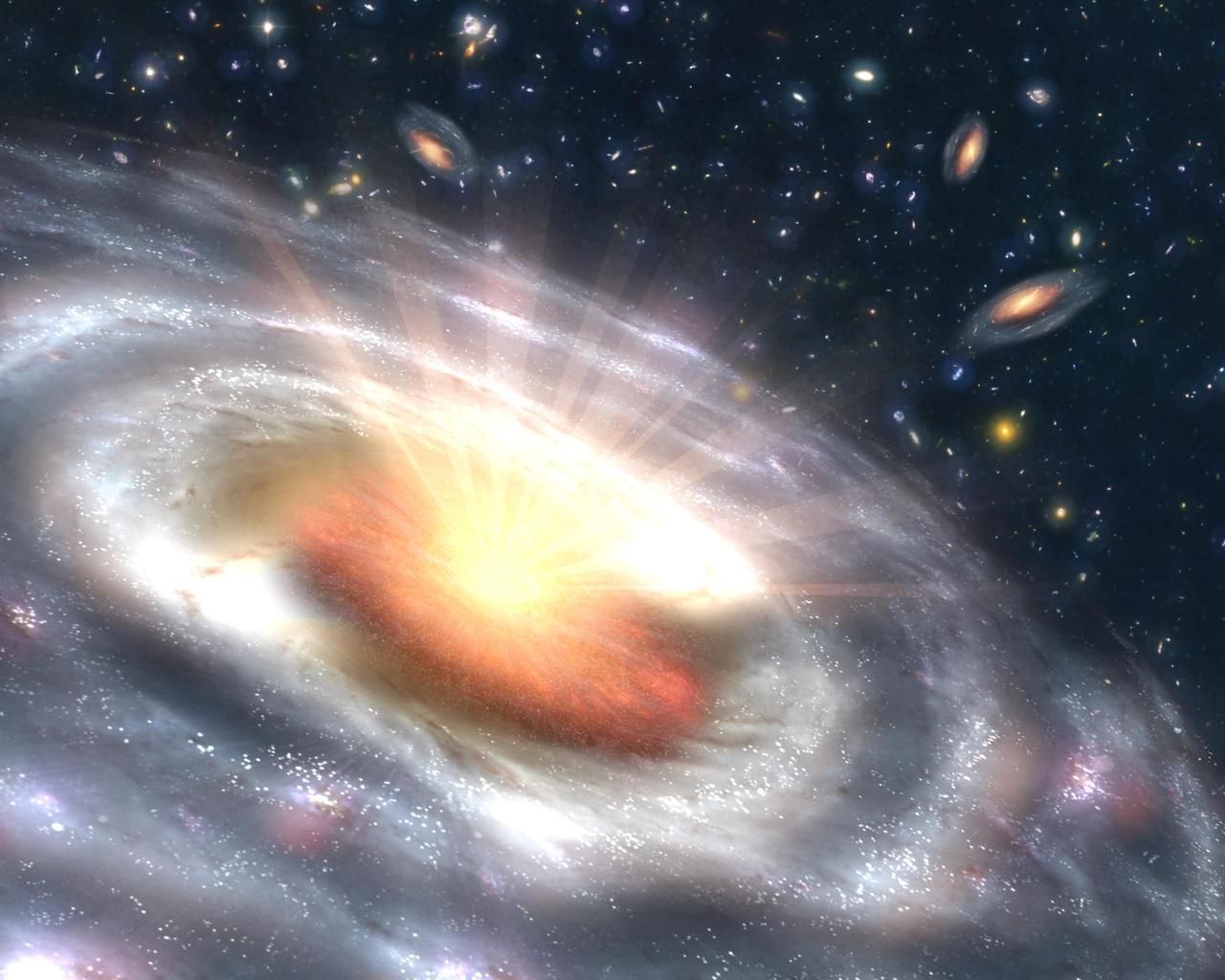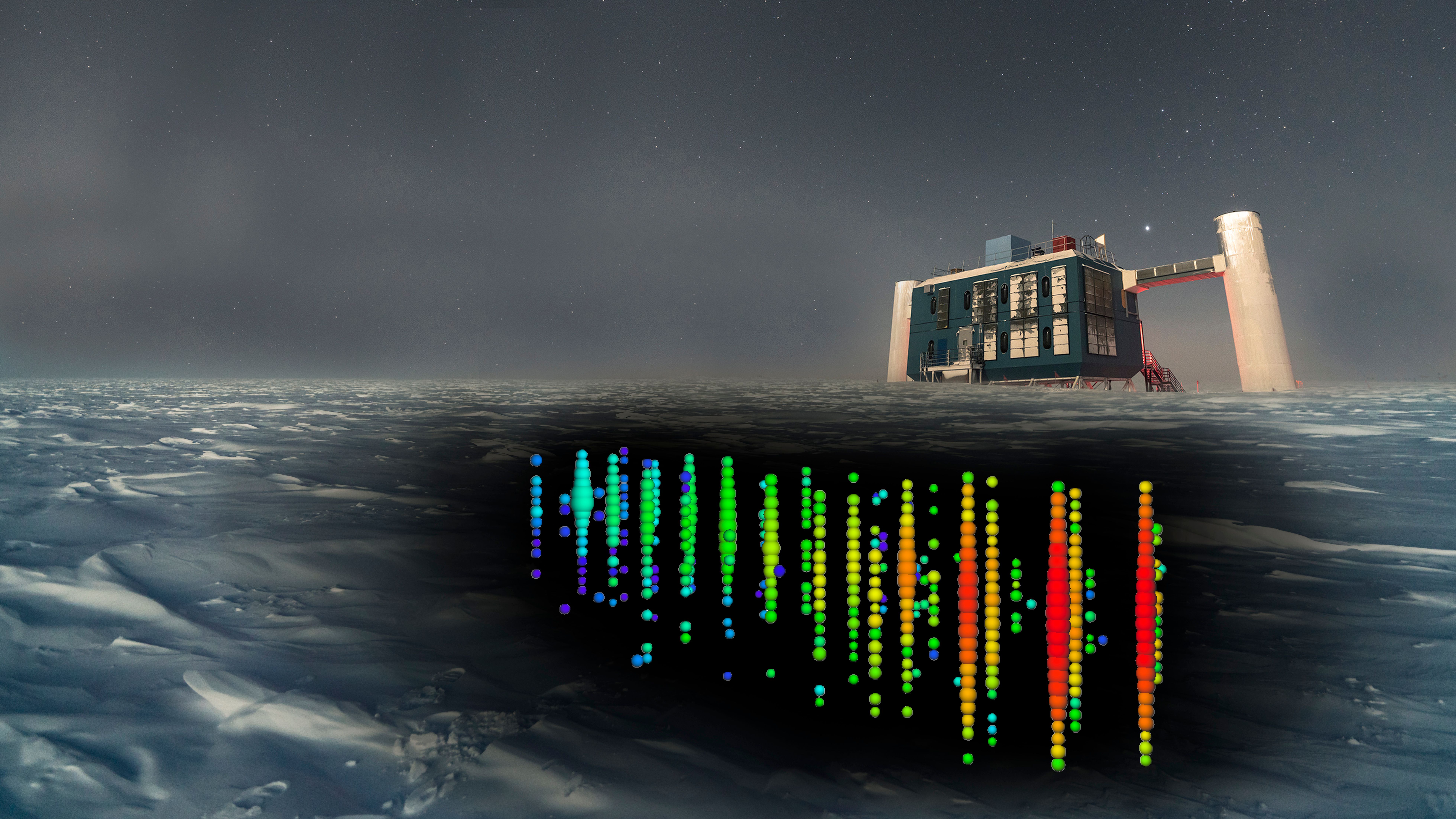
Quick Links
-
Antiparticles and Antimatter
Whether you’re watching a space documentary, reading a How-To Geek space article, or just trying to get your head around exactly what exists around us, learning the meaning of these key terms will go a long way to helping you understand what’s out there in the cosmos.
1
Cosmos
The cosmos is the entire physical universe, seen as an orderly, systematic whole rather than a random, chaotic collection of matter.
It encompasses space, time, matter, energy, and all the natural laws that have governed them in the past, are governing them now, and will govern them in the future.

Related
The 5 Biggest Cosmic Mysteries That Scientists Are Still Trying to Solve
We may never have satisfying answers.
2
Matter
Matter (and antimatter) is anything in space that has mass and volume and occupies space.
Normal or visible matter—which constitutes just 5% of the universe—includes anything we can see in visible light and things only telescopes can detect at other wavelengths, like ultraviolet and infrared.

Related
The Largest Telescope in the World: A Giant Leap for Space Exploration
The world’s largest telescope is almost as big as your house—and it’s unlocking the universe’s biggest mysteries.
Materials that have a mass and volume but can’t currently be directly observed as they don’t reflect, absorb, or emit light are dark matter and make up around 27% of the cosmos.
Due to dark matter’s ghostly properties, even today, scientists aren’t entirely sure what dark matter is made of. That said, they have been able to observe its scaffolding role and impact on visible matter in the cosmos.
The term “dark matter” was coined by astronomer Fritz Zwicky in the 1930s, and the concept itself was confirmed by Vera Rubin in the 1970s.
3
Antiparticles and Antimatter
Every type of particle of normal matter in the universe has an antiparticle (except perhaps the neutrino). Antiparticles have the same mass as their corresponding particles, though they have the opposite charge and magnetic field. Antimatter forms as the result of antiparticles combining.
Pairs of particles and antiparticles can be generated in the lab through high-energy collisions. The opposite of this process is annihilation, which happens when a particle and its antiparticle collide. The vast amounts of energy released during this particle-antiparticle collision enable scientists to study the fundamental laws of the universe.
Scientists use the Large Hadron Collider in Geneva, Switzerland, to accelerate and collide particles and antiparticles to near the speed of light, allowing them to study and test particle physics theories and the fundamental structure of matter.
If matter and antimatter had been created in equal quantities at the birth of the universe, none of us would be here today—the matter and antimatter would have annihilated each other. However, scientists are still trying to work out why there’s so much matter and so little antimatter in our universe.
4
Dark Energy
While dark matter is invisible structures that hold things together, dark energy is a “force” that is understood (to a limited extent!) to accelerate the universe’s expansion. Scientists believe it makes up around 68% of the universe, though it remains one of the greatest mysteries of the cosmos.
A popular explanation of dark energy’s role in the universe relies on it being an unchanging phenomenon related to the cosmological constant. However, other theories suggest that dark energy is a dynamic force that shifts over time.
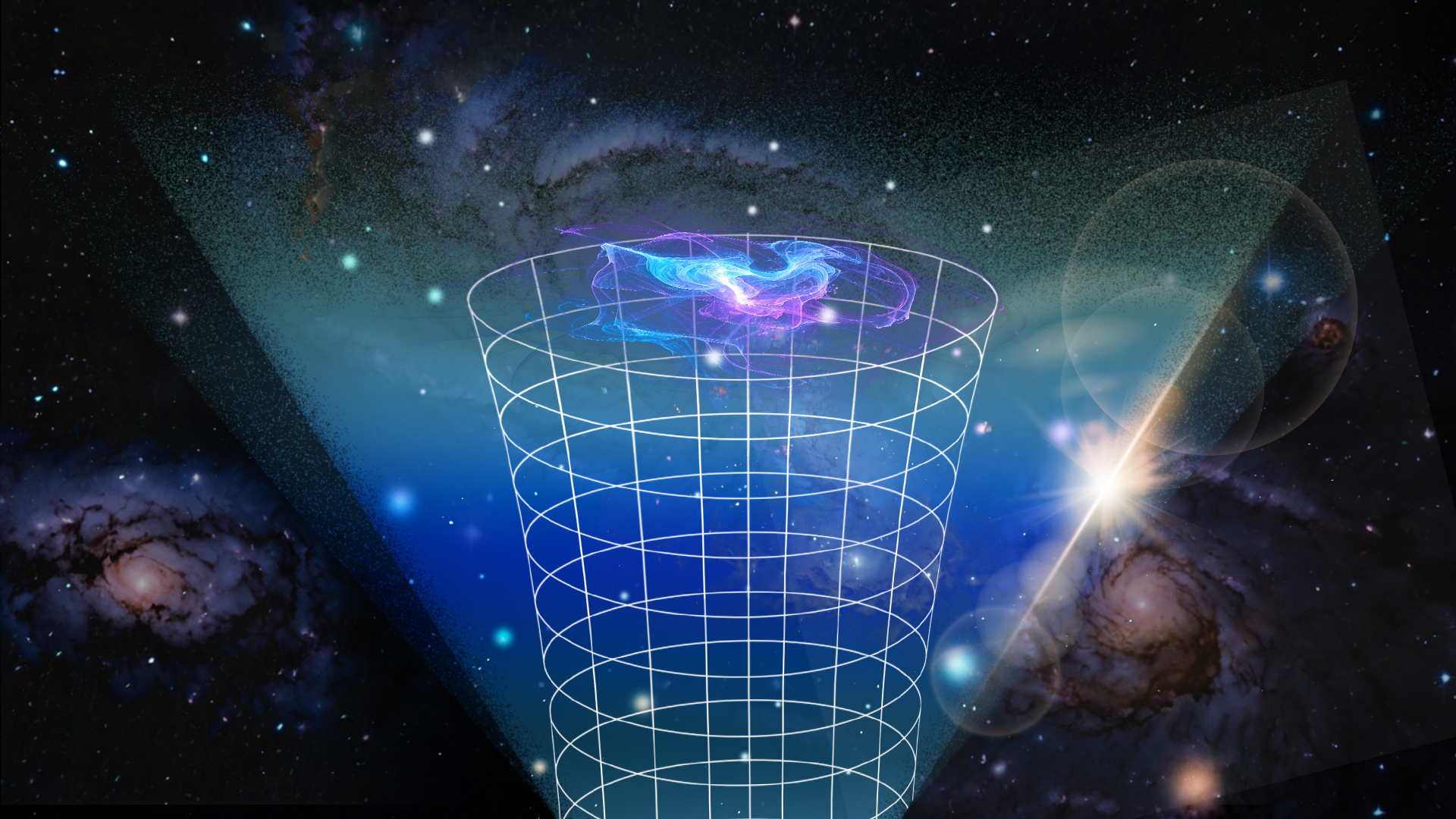
Related
Dark Energy May Be Even Weirder Than We Thought
The end of the universe could be in question.
5
Black Holes
A black hole is a mysterious astronomical object whose gravitational pull is so significant that nothing can escape it—not even light—once it passes its event horizon, the point at which the velocity needed to escape is faster than the speed of light.
Despite not being able to see black holes, scientists can observe this powerful phenomenon due to the impact it has on surrounding matter. The theoretical center of a black hole is known as the singularity.
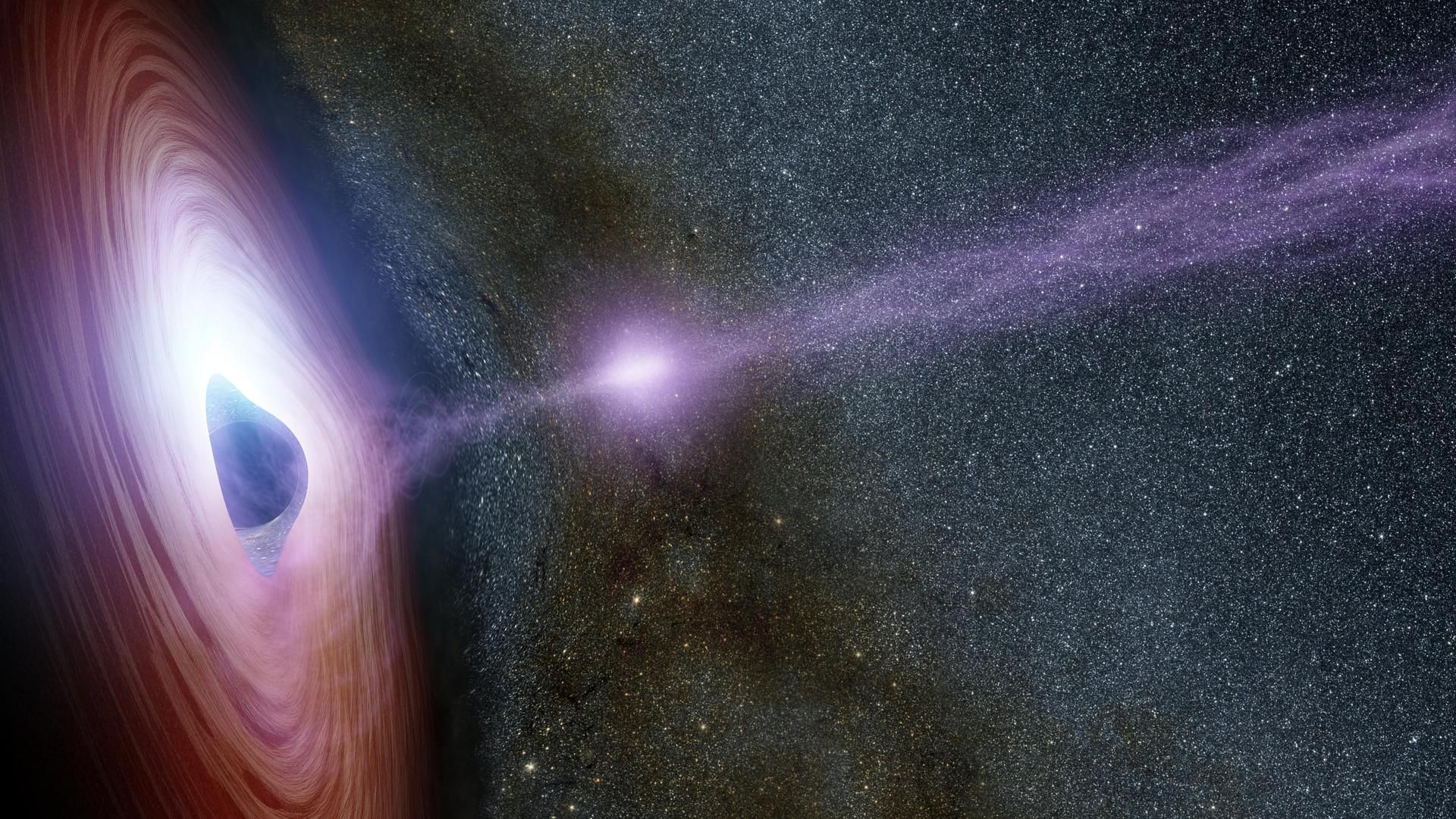
Related
9 Misconceptions You Probably Have About Black Holes
Brush up on your black hole knowledge.
The smallest of the three known types of black holes are stellar-mass black holes, which are between three and 12 times the mass of our Sun. On the other hand, supermassive black holes, such as the one in the center of the Milky Way, can be billions of solar masses. Intermediate-mass black holes (IMBHs) are, as the name suggests, somewhere between the other two.
Black holes grow when they absorb surrounding matter or other black holes, making them brutally destructive objects. That said, their intense gravitational pull plays a significant role in galactic structuring, and powerful ejections of matter from near black holes’ poles being sent across the universe can contribute to the formation of new stars.
6
Quasars
Quasars, the brightest objects in the universe, are the cores of galaxies across the universe, fueled by supermassive black holes.
As matter is pulled towards a black hole, it gathers into a cloudy spiral called the accretion disk. The inner parts of this disk travel much faster than the outer parts, causing so much friction and heat that it glows to a luminosity up to trillions of times that of our Sun.
The combination of the heat in the accretion disk and the ejection of powerful jets of matter from near the black holes’ poles makes the brightest quasars observable through telescopes on Earth.

Related
How to Choose the Best Telescope for a Beginner
From one beginner to another.
7
Cosmic Rays
Cosmic rays are highly energized particles or particle clusters from outer space that travel at a little under the speed of light (just under 300 million meters per second). They are produced by our Sun, other stars, and far-away phenomena like black holes and supernova explosions.
Solar cosmic rays usually have less energy than Milky Way Galactic cosmic rays (the most abundant in our vicinity), while extragalactic cosmic rays are generally considered the most powerful. Earth’s magnetic field protects us from most of the potential harm caused by cosmic rays, deflecting most of the charged particles away from our planet, before the atmosphere absorbs and scatters what’s left.

Related
7 Surprising Facts About the Earth’s Core You May Never Have Heard
The center of our planet is a lot more complex than you might expect.
8
Neutrinos
Neutrinos are tiny and nearly massless subatomic particles produced in cosmic events like supernova explosions, gamma-ray bursts, stellar fusion, and nuclear decay. They travel millions or even billions of light-years through the cosmos, carrying information about the events from which they derived.
However, because their interaction with other matter is minimal, they are particularly difficult to observe. Indeed, billions of neutrinos from the Sun pass through us and our planet each second without us knowing.
That said, scientists have developed specialized detectors—such as the IceCube Neutrino Observatory in Antarctica—that observe the rare occasions when neutrinos happen to collide with matter, leading to increased understanding of the universe’s origin, expansion, and less-known phenomena like dark matter.
9
Light-Years
A light-year is the distance light travels in one Earth year.
Because the distances in space are so large, standard units of measurement—like miles or kilometers—can become too difficult to fathom. One light-year is 9.46 trillion kilometers or 5.88 trillion miles, and the distance between the Milky Way Galaxy and our neighbor, the Andromeda Galaxy, is about 205 million light-years.

Related
5 Amazing Constellations and Why You Should Get to Know Them
There’s so much to see up above!
As well as measuring the distance between celestial bodies, light-years are used to quantify the size of the bigger objects in the cosmos. For example, the Milky Way Galaxy is about 105,700 light-years across.
10
Astronomical Unit
Previously, an astronomical unit (AU) was the average distance between the center of the Earth and the center of the Sun. However, in 2012, the International Astronomical Union standardized the AU as being exactly 149,597,870,700 meters, or just over 92,955,807 miles, to make the measurement consistent with the International System of Units.
No human-made object has traveled further from Earth than the Voyager 1 probe, which, as of May 2025, is about 166AU away from our planet.
Scientists mostly use the AU measurement to specify distances in the Solar System on a familiar, relative scale.
Source link



